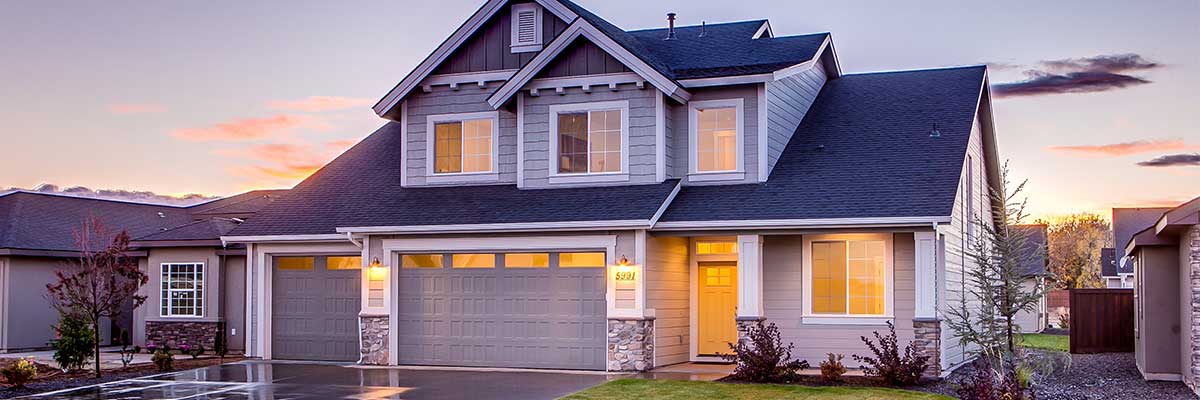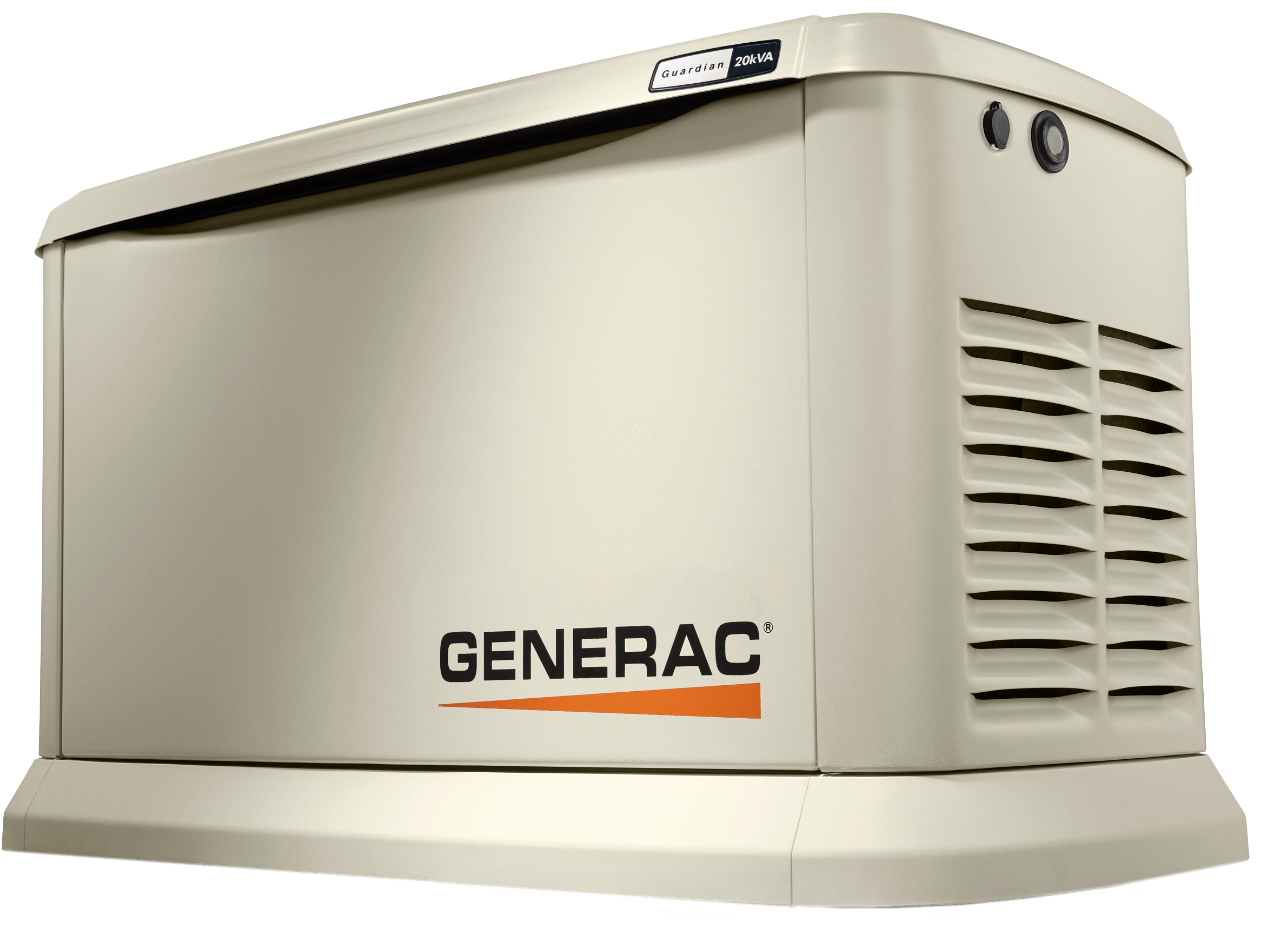-
You must own the home and have natural gas line access in the house. Propane tanks are an acceptable alternative, but they are not recommended due to cost.



Whole-home generators
Get a free assessment for a generator that fits your needs.


Whole-home generators
Get a free assessment for a generator that fits your needs.



If you want to prepare for major storms and power failures, investing in a home generator to help you cope with power outages may be the best way to go. Backup power from a permanently installed generator will switch on within seconds of a power outage so you and your family can make it safely through a storm or other disaster.
It's never been easier to own a backup generator. We can help you connect with flexible purchasing options to ensure your home's power needs are met — within your budget.
You must own the home and have natural gas line access in the house. Propane tanks are an acceptable alternative, but they are not recommended due to cost.
We try to place the unit near the breaker panel, assuming there aren't any easement or underground hazards. If it cannot be installed near the breaker panel, we will work with you to find a desirable location.
A concrete slab will be poured, similar to what an outside air conditioning unit sits on.
A licensed plumber and electrician will run piping and wiring to connect the generator to the gas and electrical meters. Sometimes these are below ground; sometimes they are attached to the house.
All work is completed to comply with building code standards.
Quality Generators professional technicians who are licensed, insured and background-checked will perform all construction, installation and maintenance.
From start to finish, it usually takes an average of 5 to 7 business days.
No. We will handle all permitting with the city for you. Quality Generators will notify both the city and the TDSP on your behalf.
Call our partner, Quality Generators, at 832-369-7800.
Depending on the model you select, the generators we offer can deliver 11 kW to 26 kW of power.
The size you need depends on several factors, which a Quality Generators representative will evaluate and discuss with you. Before your appointment, decide if you want your entire house to have electricity during an outage or if you only want to power specific areas or appliances. The more items you want to power, the more powerful your generator will need to be.
In general, 10 kW to 14 kW are enough to run survival appliances (refrigerator, HVAC, sump pump and some lights). A 15 kW to 20 kW generator can run a small home (no air conditioning), and 21 kW to 25 kW can run a small to medium-sized home, with the higher kW generators able to support an air conditioning system.
A smart transfer switch is programmed to deliver electricity to certain high-priority areas or appliances in the house before others during an outage.
Call our partner, Quality Generators, at 832-369-7800 for expert answers to technical questions.
Absolutely. An Automatic Transfer Switch (ATS) handles the entire operation of the generator back-up of your home. It starts the generator, then transfers your house, or selected loads, to the generator as the source of power; then, back to the power company when the service is restored.
If you choose to transfer your circuits or home manually to a whole home generator, the entire sequence of operation will fall on you. In situations where you are not home, or there are people in the home that cannot perform the necessary steps to run the generator, there will be no power available.
It does add additional cost to the installation of the generator, but the peace of mind provided may be what your situation needs. A discussion with your salesman or technician about this can provide you with the best information to make your decision.
Just like any piece of machinery, generators require maintenance to ensure proper operation when the power goes out. Most manufacturers recommend changing the oil and oil filter once a year or every 100 hours, as well as inspecting the battery, air filter, and condition of the generator in general. The Owners Manual that came with your generator can provide specific instructions for your particular unit.
If you live in a region where extended outages occur, you may need to keep spare oil and oil filters on hand for servicing your generator.
Be sure to reach out to your generator salesman or technician for maintenance services and replacement parts you might need for your generator in order to ensure it runs properly and extend the life of your generator.
Home standby generators are designed to perform a test run anywhere from once a week to once a month, depending on the manufacturer, to ensure proper operation. Your generator salesman or technician can instruct you in performing a test transfer of your particular system. If you notice anything unusual when the generator is performing its weekly run, or while you are testing it, call your technician and have it inspected.
The cost varies due to several factors:
We will send out a licensed plumber or electrician to walk you through all of your options and provide a final estimate.
No. It's not possible to give an accurate quote over the phone because every house is constructed and laid out differently.
We have financing options available. Financing is very flexible and is determined on a case-by-case basis with payment plans up to 10 years. If you pay outright, 50% is usually due at the beginning of the installation, and the rest is due upon completion.
1Extended 10-year limited warranty and generator offers provided by Quality Generators, LLC, dba Quality Home Products of Texas. Offer available to Reliant electricity customers and expires 12/31/2023. Additional terms and conditions apply; contact Quality Home Products of Texas for details. Reliant is not affiliated with and makes no representations or warranties of any kind regarding generators, promotions or third parties who provide them. Reliant Energy Retail Services LLC, dba Reliant, is a wholly owned subsidiary of NRG Energy, Inc.
2Requires an approved credit account with a qualified financing vendor provided by Quality Home Products of Texas. Terms and conditions apply.
Reliant Energy Retail Services, LLC, dba Reliant, is not affiliated with, and does not endorse, third parties offering in-home assessments, generator product offers or the generators they sell. Reliant makes no representations or warranties of any kind with respect to the products or services of third parties that market and sell generators.
Services provided by Reliant Energy Retail Services, LLC, dba Reliant, a wholly owned subsidiary of NRG Energy, Inc., EC 32274. Regulated by the Texas Department of Licensing & Regulation, P.O. Box 12157, Austin, TX 78711, 1-800-803-9202, 512-463-6599. © 2023 Reliant Energy Retail Holdings, LLC. All rights reserved.